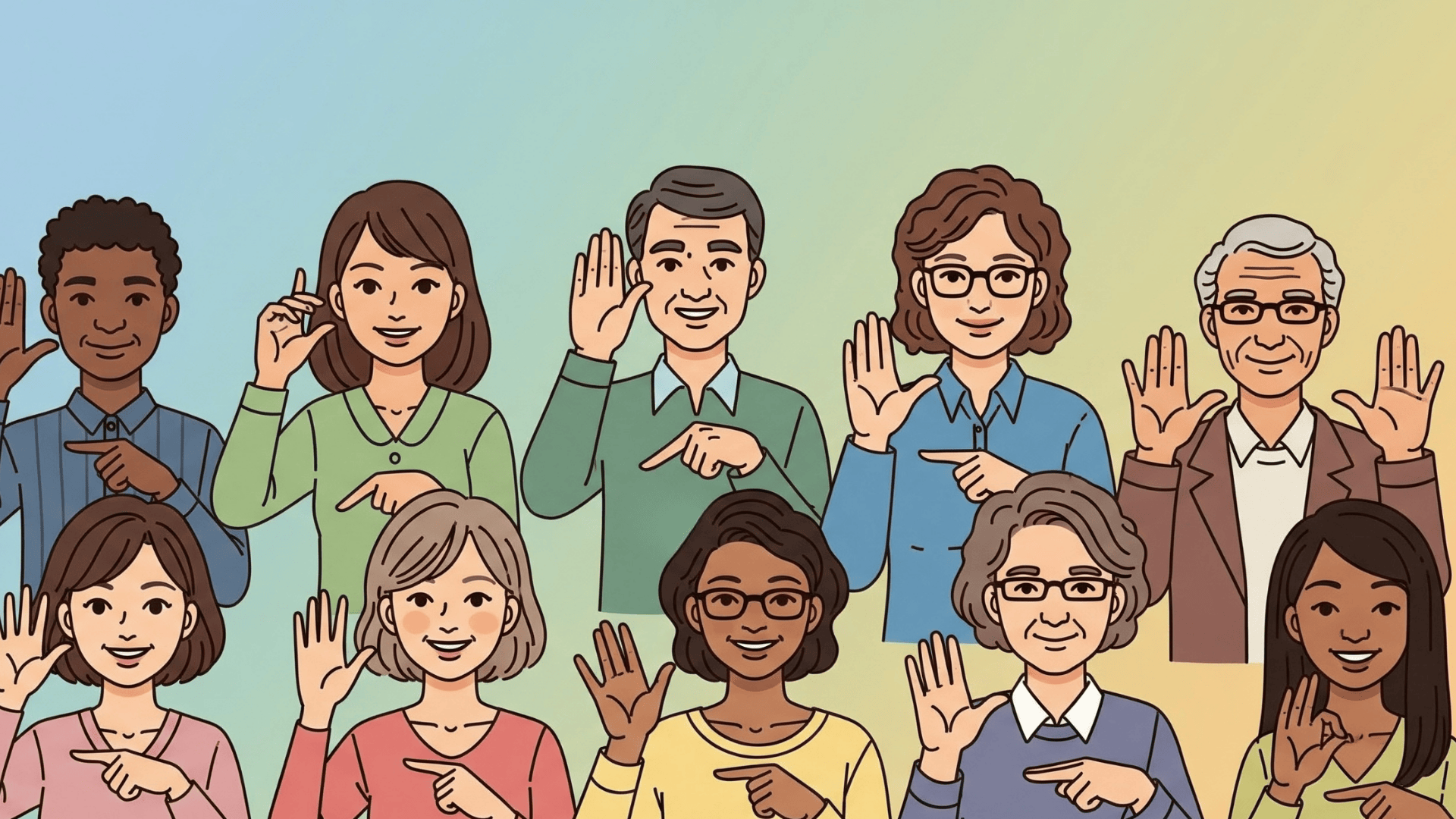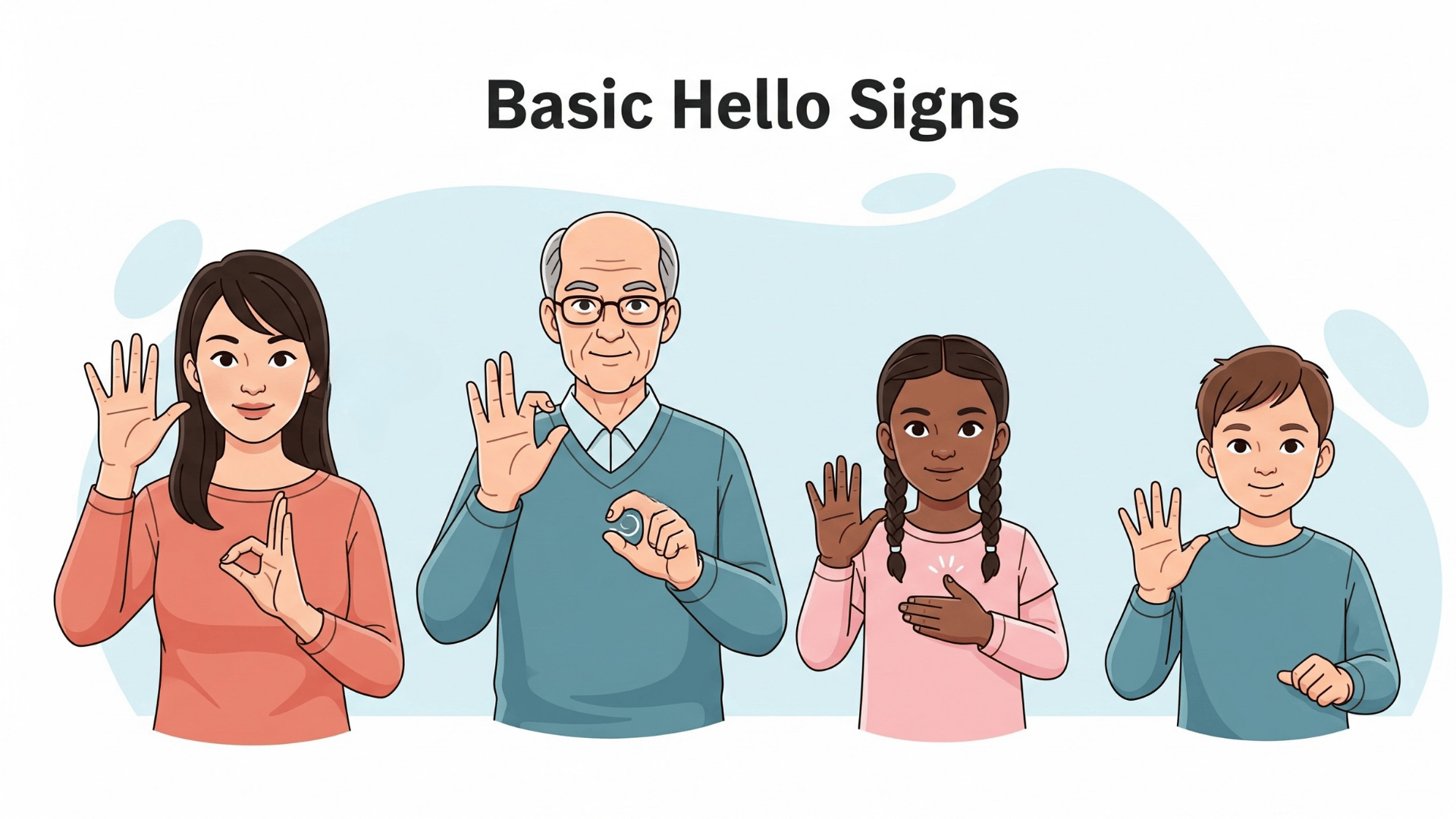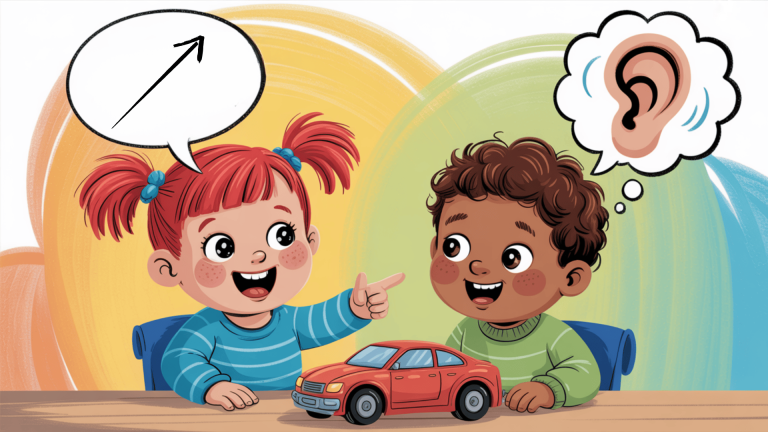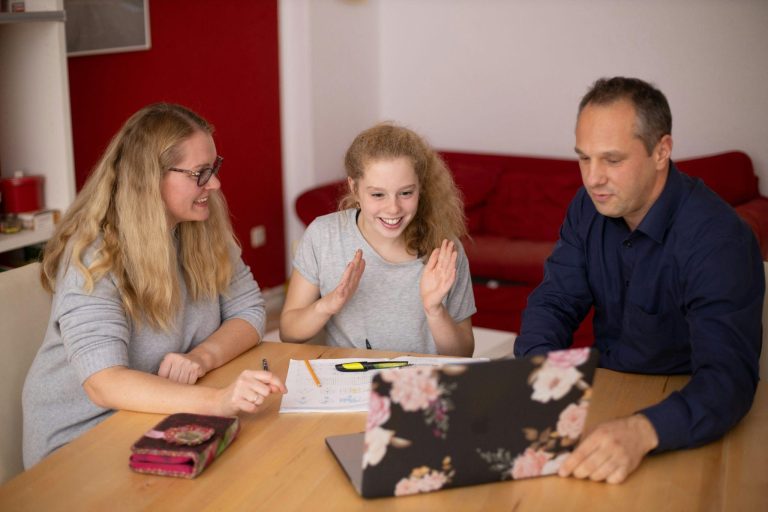ASL Greetings: How to Sign Hello and Goodbye for Beginners

American Sign Language offers a beautiful way to connect with the Deaf community and expand communication skills beyond spoken words.
Learning basic greetings and polite phrases like “you’re welcome” in ASL represents the perfect starting point for beginners who want to show respect and build meaningful connections.
These fundamental signs demonstrate genuine interest in Deaf culture while providing practical tools for real conversations.
The signs for hello, goodbye, and common pleasantries form the foundation for comfortable interactions with Deaf individuals.
Every conversation begins and ends with these essential expressions that welcome people into shared communication experiences.
Why ASL Greetings Matter
ASL greetings serve as more than simple words in signed conversations. They demonstrate respect, enthusiasm, and openness when meeting someone who communicates through sign language.
These initial signs help break the ice and show genuine interest in connecting across communication differences.
Proper greetings lay the groundwork for comfortable conversations and reflect cultural awareness.
Deaf community members appreciate when hearing people take the time to learn basic signs correctly. The effort shows commitment to inclusive communication rather than relying on writing or speaking alone.
Basic Hello Signs

Learning the fundamental hello signs provides the building blocks for all ASL conversations and social interactions. These three essential greetings offer options for different situations, from formal meetings to casual encounters with friends.
| Sign | Hand Position | Movement | Best Used For |
|---|---|---|---|
| Hello | Hand at forehead, palm out, fingers together | Move forward like a salute | Formal introductions and meetings |
| Hi | Palm facing outward | Simple wave motion | Casual, everyday greetings |
| Hey | Hand raised clearly | Brief, deliberate wave | Getting attention from a distance |
These basic greetings form the foundation that makes every signed conversation feel welcoming and respectful.
Common Greeting Phrases
Beyond simple hellos, ASL includes friendly questions and time-specific greetings that add warmth to conversations.
These phrases help create natural dialogue flow while showing genuine interest in the person being greeted.
- “What’s up?” finger placement: Place middle fingers on chest and flick upward while raising eyebrows to show friendly curiosity.
- “How are you?” hand position: Bring both fists together with thumbs touching, slide apart horizontally, then point to the person with a questioning expression.
- “Good morning” sun pattern: Extend non-dominant arm palm-up, move dominant hand from chin down to other hand, then rise upward like a sunrise.
- “Good afternoon” overhead motion: Swing flat dominant hand over upturned palm to represent midday sun position overhead.
- “Good night” sunset movement: Curve dominant hand over non-dominant hand like the sun setting below the horizon line.
These expanded greetings create more engaging conversations that feel natural and socially connected.
Goodbye Signs and Farewells
Farewell signs in ASL range from simple waves to heartfelt expressions of care and future connection. These parting gestures allow signers to end conversations with appropriate warmth and respect for different relationship levels.
| Sign | Hand Movement | Meaning | Context |
|---|---|---|---|
| Goodbye | Palm beside head, wave downward | Standard farewell | Universal parting gesture |
| See You Later | Tap cheek (see) + L-shape (later) | Casual future meeting | Friends and acquaintances |
| Take Care | Cross flat hands, brush gently | Concern for well-being | Caring, thoughtful farewell |
These farewell options ensure every conversation ends with the right tone and level of personal connection.
Introducing Yourself
Personal introductions follow predictable patterns that newcomers can master quickly.
Start with a flat hand on the chest for “my,” then form H-shapes with both hands and tap them together for “name.”
Complete the introduction by fingerspelling each letter of the actual name clearly and slowly. “Nice to meet you,” adds warmth to first encounters through friendly gestures.
Make the “nice” sign by brushing one flat hand over the other, then bring two fists together with palms facing each other for “meet.” A genuine smile improves the welcoming message significantly.
These signs help establish rapport and build a base to learn other simple, affectionate ASL signs.
Practice Methods
Mirror practice helps beginners monitor hand shapes and movements for accuracy. Recording practice sessions allows review and improvement of signing technique over time.
Regular repetition builds muscle memory that makes greetings feel natural rather than forced.
Fingerspelling practice supports name introductions and new vocabulary development.
Start slowly with clear letter formation, then gradually increase speed while maintaining accuracy and readability.
Learning Resources
Online videos provide visual demonstrations that beginners need to master hand movements correctly.
Educational channels offer step-by-step guides for basic greetings and everyday phrases. These resources show proper technique from multiple angles for better understanding.
Local ASL meetups and Deaf community events offer authentic practice opportunities with native signers.
These gatherings provide real-world experience that builds confidence and cultural awareness simultaneously.
Conclusion
Learning basic ASL greetings creates meaningful connections with Deaf community members while demonstrating respect for their language and culture.
These fundamental signs open conversations and show a genuine interest in inclusive communication across different abilities.
Practice with proper technique, facial expressions, and cultural awareness makes interactions more natural and welcoming.
Starting with hello and goodbye provides the foundation for deeper ASL learning and relationships.
Take time to practice regularly and approach each interaction with patience, respect, and enthusiasm for this beautiful visual language.






